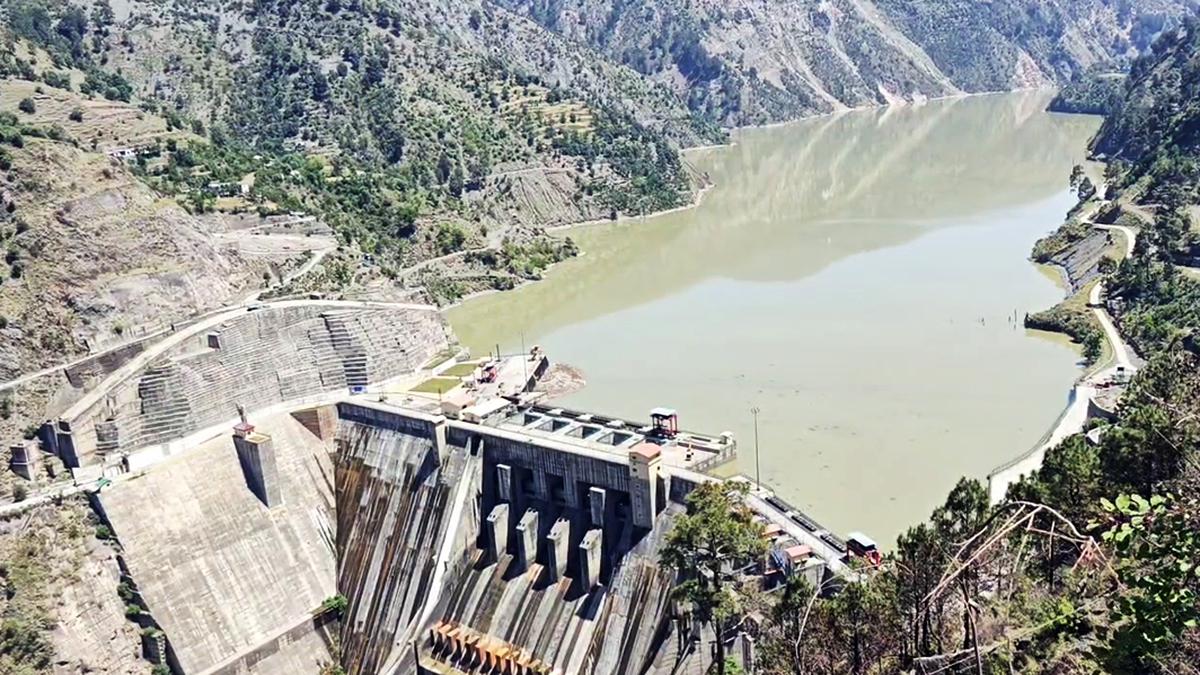Suspension of the Indus Waters Treaty: What are the implications for India and Pakistan?

Debashree Mukherjee, India’s Secretary of Water Resources, on Thursday (April 24, 2025) wrote to her Pakistani counterpart, Syed Ali Murtaza, that India was keeping the 1960 Indus Waters Treaty (IWT) in abeyance with “immediate effect” following the terror attack in Pahalgam, which claimed the lives of 26 civilians. In response, the Pakistan Prime Minister’s office condemned the move as an “act of war” and announced a series of retaliatory diplomatic measures, including the suspension of the 1972 Simla Agreement. For over six decades, the treaty has stood as a rare testament to the resilience of rules-based diplomacy in South Asia. However, amid escalating tensions between New Delhi and Islamabad, the future of the pact now appears more precarious than ever. What does the treaty entail? The origins of the IWT can be traced to the Partition of India in August 1947, which marked the end of British colonial rule and the emergence of India and Pakistan as two sovereign nations. Both countries, home to a combined population of over 1.6 billion, are critically dependent on the waters of the rivers flowing from the Himalayas. Given their shared reliance on these river systems for agriculture and irrigation, an urgent need arose to negotiate an equitable sharing of water resources. After nearly a decade of negotiations brokered by the World Bank, former Indian Prime Minister Jawaharlal Nehru and former Pakistani President Ayub Khan signed the treaty in September 1960. Under the treaty, India was granted unrestricted rights over the three eastern rivers — Ravi, Beas, and Sutlej, while Pakistan was given exclusive control over the three western rivers — Indus, Jhelum, and Chenab, which collectively comprise the lion’s share of the basin’s water reserves. Although the western rivers are allocated to Pakistan, India retains limited rights to use their waters for “non-consumptive” purposes, including domestic use, irrigation, and hydroelectric power generation. The treaty also establishes a robust institutional framework for cooperation and dispute resolution. Disputes are resolved through a three-tiered process: first, before the Permanent Indus Commission (PIC), comprising a delegation of water experts from both countries; then a World Bank-appointed neutral expert; and eventually, a forum of arbitrators. Why have there been prior attempts to modify its terms? The design parameters of the Kishenganga and Ratle hydropower projects in Jammu and Kashmir — the former already a commissioned project — have been a bone of contention between the two countries for years now. While Pakistan contends that the design of these structures allows India greater control over the shared water resources, India maintains that the projects adhere to the treaty’s provisions on equitable water use. In 2013, the Hague-based Permanent Court of Arbitration permitted India to continue its projects on the Kishenganga but barred the use of ‘drawdown flushing’ if it caused the water level to drop below the dam’s dead storage capacity. The technique involves releasing accumulated water from a reservoir to flush out silt and sediment, thereby ensuring the optimal functioning of hydropower projects. It can also be used to control the flow of rivers downstream. In 2015, Pakistan requested that the World Bank appoint a neutral expert to establish operating procedures for the Kishenganga and Ratle projects. Although India endorsed the request, Pakistan later withdrew it unilaterally and, in 2016, proposed referring the dispute to arbitration. However, India characterised the arbitration proceedings as “illegally constructed”, arguing that a dispute cannot be escalated to the third stage—arbitration—without first exhausting the two earlier mechanisms outlined in the treaty. The World Bank initially agreed, warning that parallel proceedings before a neutral expert and a court of arbitration could result in “contradictory outcomes.” However, in 2022, it facilitated the appointment of both a neutral expert and a chairman for the court of arbitration. While Pakistan has participated in both proceedings, India has boycotted the Hague-based arbitration. As talks reached an impasse, New Delhi issued a formal notice to Islamabad in 2023 under Article XII(3) of the IWT, seeking the treaty’s “modification” for the first time. India cited significant changes since the treaty’s signing, including shifts in population, evolving water requirements, the growing threat of climate-related disasters, and cross-border terrorism. Last year, sources told The Hindu that the PIC would not convene further meetings until both sides discussed renegotiating the 64-year-old treaty. It was also learnt that, despite India sending multiple notices, Pakistan had not provided any “satisfactory response.” Is unilateral suspension of the treaty permissible? The IWT cannot be altered unilaterally. Article XII stipulates that its provisions “may from time to time be modified by a duly ratified treaty concluded for that purpose between the two Governments.” It further clarifies that the treaty can only be terminated through a “duly ratified treaty” agreed upon by both states. The term “hold in abeyance,” as used by India in its letter to Pakistan, is neither recognised in international law nor mentioned in the Vienna Convention on the Law of Treaties (VCLT), 1969, the principal treaty governing agreements between states. “The VCLT does not use the word ‘abeyance’; it uses the term ‘suspension,’ which allows a country to suspend the operation of an entire treaty or a part of it. Suspension is distinct from termination. I believe that when India used the word ‘abeyance,’ it intended to mean ‘suspension’ rather than termination of the IWT,” Dr. Prabhash Ranjan, professor at Jindal Global Law School, told The Hindu. Article 62 of the VCLT allows a treaty to be repudiated if there has been a “fundamental change of circumstances” from those existing at the time of its conclusion. Although India is not a party to the VCLT and Pakistan has signed but not ratified it, the International Court of Justice (ICJ) in the Fisheries Jurisdiction Cases (United Kingdom v. Iceland; Federal Republic of Germany v. Iceland) affirmed that Article 62 codifies customary international law and is therefore binding regardless of formal ratification. India appears to be invoking this principle, as its letter states that “fundamental changes in the circumstances” require a “reassessment of obligations” under the IWT. It cites factors such as “significantly altered population demographics,” the “need to accelerate clean energy development,” and Pakistan’s alleged failure to act in “good faith.” However, Dr. Ranjan pointed out that ICJ rulings have set a high threshold for what qualifies as a “fundamental change in circumstances”. In the 1997 Gabcíkovo-Nagymaros Project dispute between Hungary and Slovakia over the construction of a dam, Hungary argued that political and economic shifts, along with the threat of environmental disaster, provided sufficient grounds to terminate the treaty. However, the ICJ rejected these arguments, noting that the political and economic changes were not directly linked to the treaty’s primary objective — joint energy production. Additionally, any potential environmental risks were deemed not entirely unforeseeable and therefore, could not be considered a “fundamental change of circumstances.” “The exception under Article 62 is confined to changes in the circumstances existing at the time of the treaty’s conclusion; it does not extend to subsequent external developments. A more prudent course for India would be to suspend the IWT as a countermeasure under international law, invoking Pakistan’s persistent violation of India’s territorial sovereignty through its sponsorship of terrorism”, Dr. Ranjan said. How is the suspension likely to affect Pakistan? More than 80% of Pakistan’s agriculture and around a third of its hydropower generation depend on the waters of the Indus basin. However, experts say that India lacks the massive storage infrastructure and extensive canal systems needed to withhold tens of billions of cubic metres of water from the western rivers. “The infrastructure India possesses consists largely of run-of-the-river hydropower plants, which do not have the capacity for large-scale storage. However, the real impact lies in the uncertainty over water flow, which could severely affect Pakistan’s predominantly agrarian economy. If India begins regulating the flow using its existing infrastructure, Pakistan could experience significant disruptions, particularly during the upcoming summer season when water availability is already at its lowest,” Dr. Happymon Jacob, associate professor at the School of International Studies, Jawaharlal Nehru University, told The Hindu. A senior government official earlier told The Hindu that India will explore “options that it has never considered” under the IWT, such as redesigning its hydroelectric projects to increase water storage capacity and deploying ‘drawdown flushing’ of its reservoirs. The abrupt release of large volumes of water without prior warning could potentially cause significant damage downstream in Pakistan. “Among non-kinetic measures, this is likely the harshest step India could take. As far as next steps are concerned, it is unlikely that the international community will exert substantial pressure on India, as Pakistan would first need to take credible steps to address India’s concerns regarding its sponsorship of cross-border terrorism,” Dr. Jacob said. He also pointed out that Pakistan would find it difficult to secure intervention from the World Bank unless India is willing to cooperate.



















